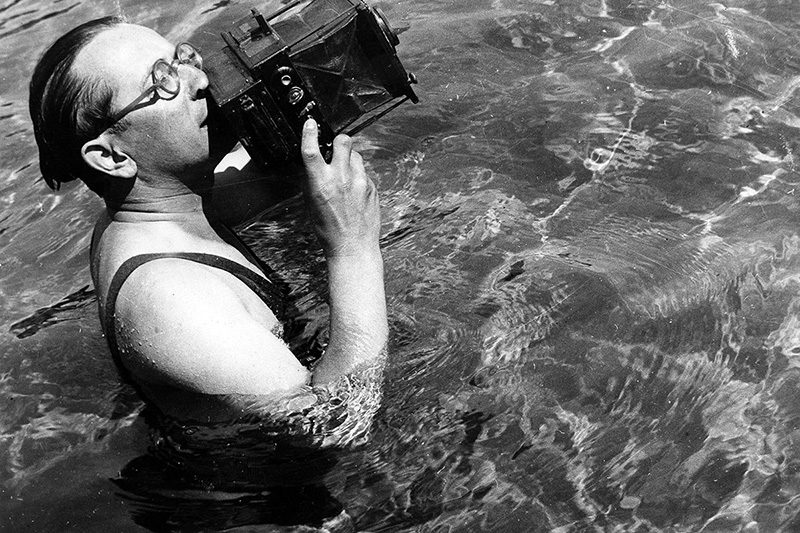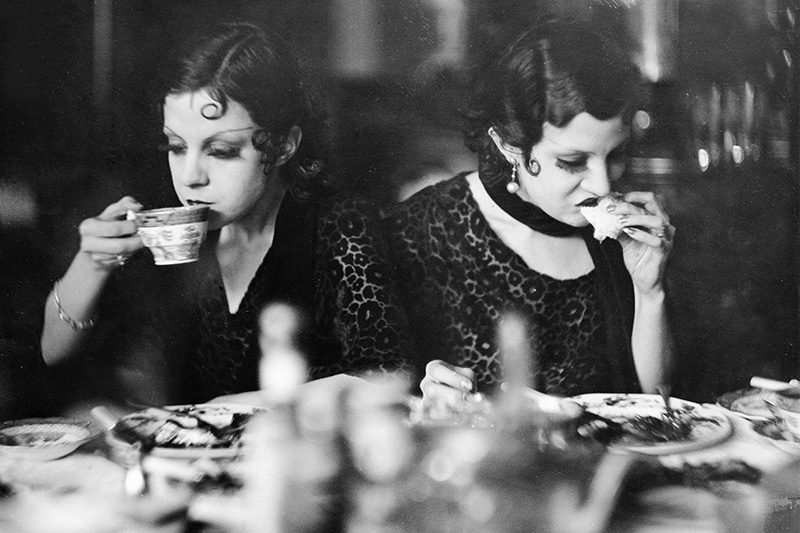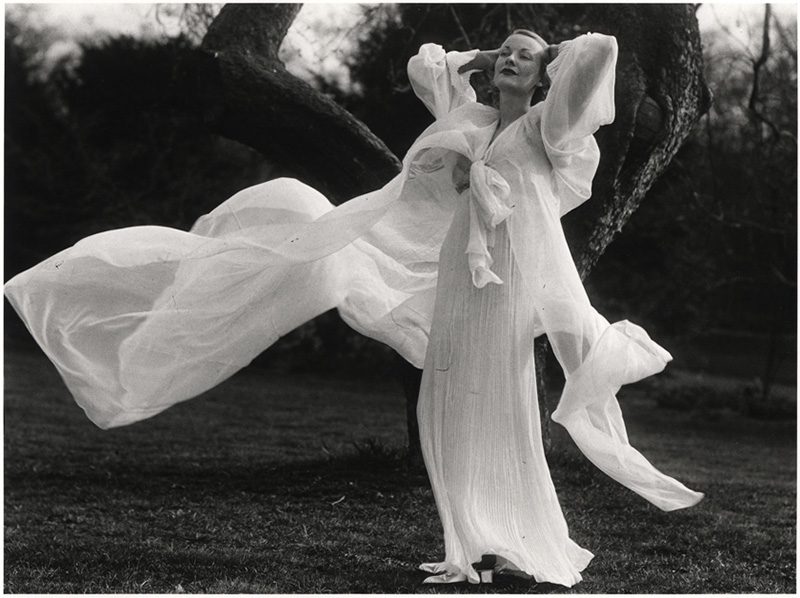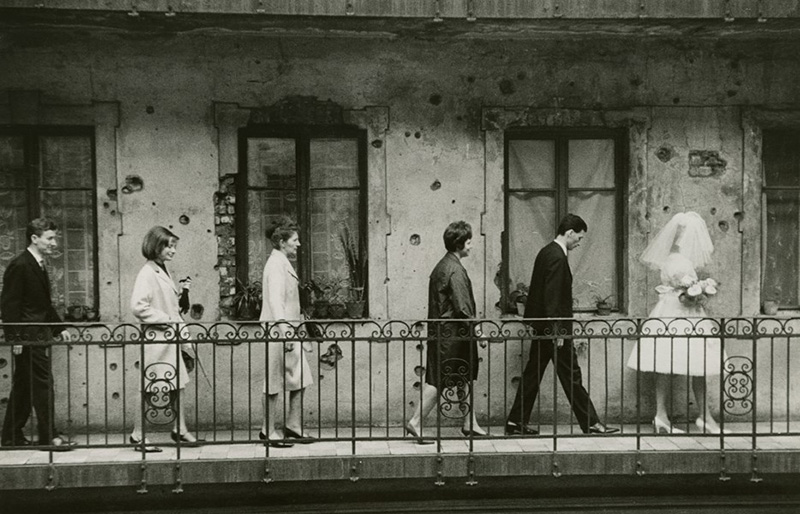PHOTO:Martin Munkácsi
 In 1933, photographer Martin Munkácsi (18/5-1896-13/7/1963), made history and changed the world of photography forever when he took the first spontaneous fashion photograph for Harper’s Bazaar. Throughout the ‘20s and ‘30s, the little-known Hungarian photographer shot some of the most captivating people and events of his time, and his work influenced some of the greatest photographers in the world, from Richard Avedon to Henri Cartier-Bresson to Edward Steichen.
In 1933, photographer Martin Munkácsi (18/5-1896-13/7/1963), made history and changed the world of photography forever when he took the first spontaneous fashion photograph for Harper’s Bazaar. Throughout the ‘20s and ‘30s, the little-known Hungarian photographer shot some of the most captivating people and events of his time, and his work influenced some of the greatest photographers in the world, from Richard Avedon to Henri Cartier-Bresson to Edward Steichen.
By Dimitris Lempesis
 Martin Munkácsi was born in 1896 in Hungary, and began his journalism career in Budapest in 1921. He was contributing sports articles to the local newspaper, Az Est. What made Munkácsi different from his peers was his ability to capture action in a way no one was doing at the time. In 1928, he moved to Berlin and began working for several different magazines covering stories in Germany as well as major cities all over the world. In 1933, Munkácsi covered the historic Day of Potsdam, capturing Hitler and the new Minister of Propaganda, Goebbels. These were some of the last photographs that he took in Germany, Munkácsi was a Jewish photographer, working for Jewish-run publications, which, at this time, meant his livelihood and his life was at great risk. That same year, while on assignment in New York, Munkácsi did a shoot for Harper’s Bazaar, which would end up not only leading to an opportunity that would save his life, but would also change the world of fashion. Munkácsi brought the same action and spontaneity that he captured in his sports photography to the pages of fashion magazines. At this time, fashion was only photographed in studios, entirely staged, where models were posed like mannequins. Munkácsi’s 1933 photograph of Lucile Brokaw running down the beach, was revolutionary, and considered by many as the start of true fashion photography. In bringing action to the set of a fashion shoot, he was able to capture the vitality and zest of the all-American woman in a way that no one else had before. After taking that groundbreaking photograph, Harper’s Bazaar editor Carmel Snow made Munkácsi a job offer, allowing him to move to New York and escape the growing danger in Germany. Once in New York, Munkásci went on to contribute many famous photographs to the fashion world, including the first nude published in Harper’s Bazaar. He also worked at Life and Ladies’ Home Journal, which allowed him to bring his style to photographs of Hollywood stars. Rather than staging traditional poses for the camera, Munkácsi inspired stars to dance, jump, and twist, infusing the photographs with personality and energy. Munkácsi inspired generations of famous photographers that came after him, and this could not be more evident than in the quotes Henri Cartier-Bresson, for the Munkácsi’s photograph “Three Boys at Lake Tanganyika”, taken on a beach in Liberia. Cartier-Bresson later said, “For me this photograph was the spark that ignited my enthusiasm. I suddenly realized that, by capturing the moment, photography was able to achieve eternity. It is the only photograph to have influenced me. This picture has such intensity, such joie de vivre, such a sense of wonder that it continues to fascinate me to this day”.
Martin Munkácsi was born in 1896 in Hungary, and began his journalism career in Budapest in 1921. He was contributing sports articles to the local newspaper, Az Est. What made Munkácsi different from his peers was his ability to capture action in a way no one was doing at the time. In 1928, he moved to Berlin and began working for several different magazines covering stories in Germany as well as major cities all over the world. In 1933, Munkácsi covered the historic Day of Potsdam, capturing Hitler and the new Minister of Propaganda, Goebbels. These were some of the last photographs that he took in Germany, Munkácsi was a Jewish photographer, working for Jewish-run publications, which, at this time, meant his livelihood and his life was at great risk. That same year, while on assignment in New York, Munkácsi did a shoot for Harper’s Bazaar, which would end up not only leading to an opportunity that would save his life, but would also change the world of fashion. Munkácsi brought the same action and spontaneity that he captured in his sports photography to the pages of fashion magazines. At this time, fashion was only photographed in studios, entirely staged, where models were posed like mannequins. Munkácsi’s 1933 photograph of Lucile Brokaw running down the beach, was revolutionary, and considered by many as the start of true fashion photography. In bringing action to the set of a fashion shoot, he was able to capture the vitality and zest of the all-American woman in a way that no one else had before. After taking that groundbreaking photograph, Harper’s Bazaar editor Carmel Snow made Munkácsi a job offer, allowing him to move to New York and escape the growing danger in Germany. Once in New York, Munkásci went on to contribute many famous photographs to the fashion world, including the first nude published in Harper’s Bazaar. He also worked at Life and Ladies’ Home Journal, which allowed him to bring his style to photographs of Hollywood stars. Rather than staging traditional poses for the camera, Munkácsi inspired stars to dance, jump, and twist, infusing the photographs with personality and energy. Munkácsi inspired generations of famous photographers that came after him, and this could not be more evident than in the quotes Henri Cartier-Bresson, for the Munkácsi’s photograph “Three Boys at Lake Tanganyika”, taken on a beach in Liberia. Cartier-Bresson later said, “For me this photograph was the spark that ignited my enthusiasm. I suddenly realized that, by capturing the moment, photography was able to achieve eternity. It is the only photograph to have influenced me. This picture has such intensity, such joie de vivre, such a sense of wonder that it continues to fascinate me to this day”.










